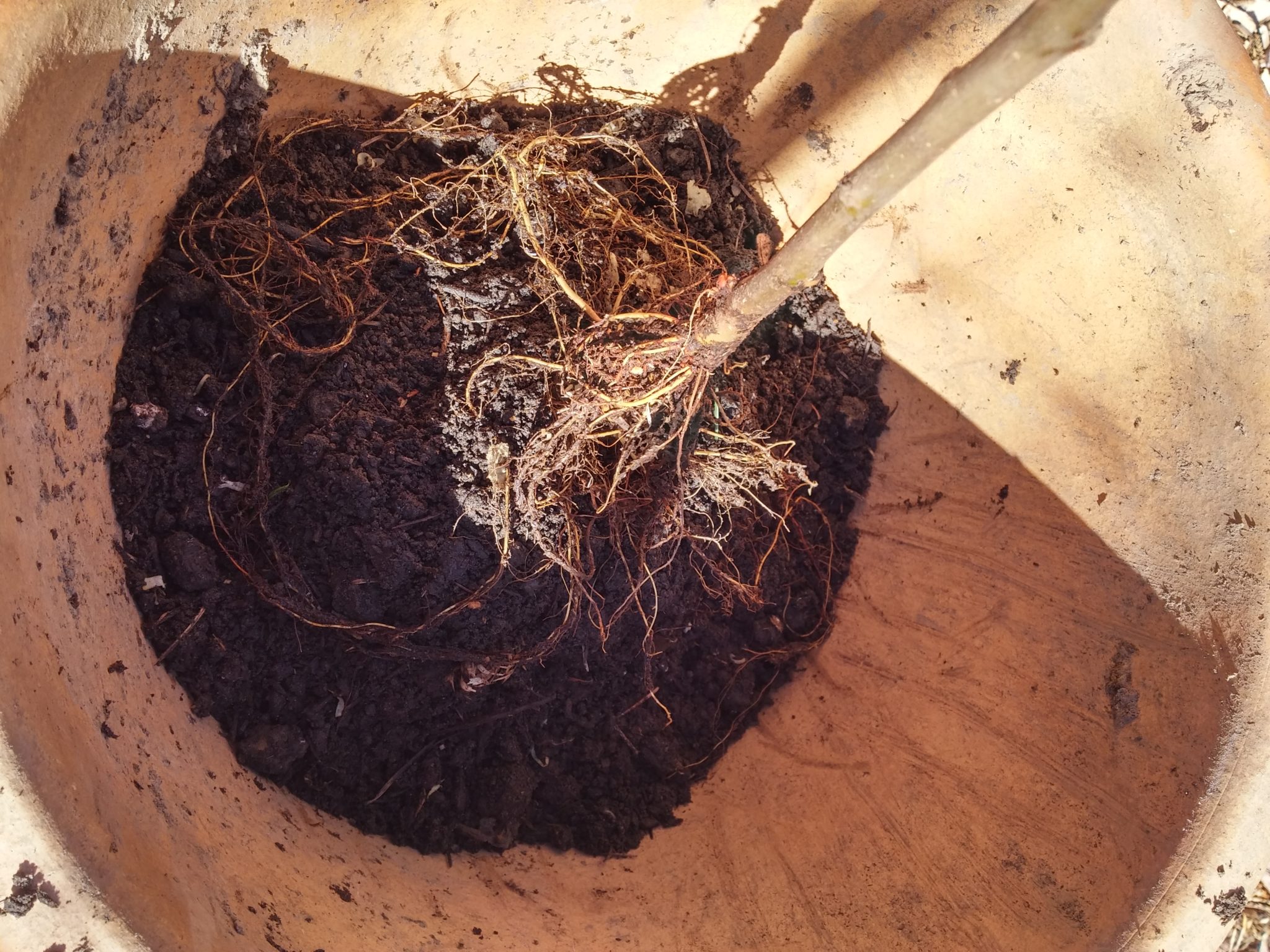
Winter Is Bare Root Tree Planting Season
Bare root deciduous trees, like the apple tree shown above, become available from nurseries in late winter. These trees are sold with their roots bare, or not in soil.
Although planting in winter weather may be daunting, planting bare root trees now will allow root establishment before the growing season. The fact that you are planting the bare root tree in the soil dug from the hole helps them to become established more quickly, too. Bare root trees are significantly less expensive and lighter weight than container and balled and burlapped trees. Another benefit of planting trees at this time of year is that our ubiquitous winter and spring rains will keep the young tree sufficiently watered as it becomes established. Proper container tree planting was discussed in a previous post “Fall Is Container Tree Planting Season”.
Selecting The Right Tree
Before purchasing any tree, know where on your property it will be planted. In addition to the USDA climate zone of your overall property, the specific planting site’s sun and wind exposure, water access and drainage will determine what tree will thrive there.
Planting Bare Root Trees
As with all plantings, locate your utilities before you dig and plant the tree in a location that will give ample clearance for the mature tree canopy. After purchasing the tree, do not allow the roots to dry out before planting. Dig a hole twice as wide as the root bundle. Form a cone of soil in the planting hole and arrange the roots around the cone. Soil may need to be added to the cone to ensure that the tree is propped up to a level that the root collar is not below the soil surface. Holding the tree upright, add the soil dug from the hole around the roots and firm the soil with your hands. Water the young tree deeply after planting.
Caring For Bare Root Trees
In the summer, water young trees deeply to prevent drought stress. To learn more about the summer watering needs of newly planted trees, check out our previous post. Staked trees should be checked routinely to ensure that the staking materials are not damaging or girdling the stem. Stakes and all staking materials should be removed as soon as the tree is sturdy.
The efforts of careful site and plant selection, proper planting technique, and routine plant care will be rewarded with a well established, healthy tree.


